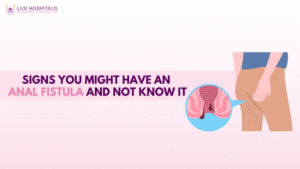8 Powerful Pelvic Floor Disorder Causes to Avoid

Introduction
Imagine trying to hold in a sneeze only to feel an unexpected leak or struggling with discomfort in your lower abdomen that just won’t go away. These might seem like minor annoyances, but they could be signs of a deeper issue related to pelvic floor disorder causes affecting your pelvic health.
Brief Overview of Pelvic Floor Disorders (PFDs)
Pelvic floor disorders (PFDs) encompass a range of conditions that occur when the muscles and connective tissues of the pelvic floor become weakened or damaged. These disorders can lead to uncomfortable and sometimes debilitating symptoms, including urinary incontinence, pelvic organ prolapse, and chronic pelvic pain.
Importance of Understanding the Causes
Understanding pelvic floor disorder causes is crucial for prevention and management. Whether it’s due to childbirth, aging, or lifestyle factors, identifying these causes can help you take proactive steps to maintain your pelvic health and avoid the complications that come with PFDs.
In this blog, we’ll explore the most common pelvic floor disorder causes, shedding light on how factors like childbirth, obesity, and even certain daily habits can contribute to these conditions. We’ll also discuss the symptoms to watch out for and offer tips on prevention and management to help you stay in control of your pelvic health.
Understanding the Pelvic Floor
Anatomy and Function of the Pelvic Floor
The pelvic floor is a intricate system of muscles, ligaments, and connective tissues that create a supportive sling at the base of the pelvis. These muscles stretch from the pubic bone at the front to the tailbone at the back, and they are crucial in supporting the organs that reside within the pelvic region.

The pelvic floor’s main functions include:
- Supporting the pelvic organs: The pelvic floor holds the bladder, uterus (in women), and rectum in place, preventing them from sagging or prolapsing.
- Controlling the release of urine and feces: The muscles of the pelvic floor contract and relax to control the opening and closing of the urethra and anus, aiding in urinary and bowel continence.
- Stabilizing the core: The pelvic floor works in tandem with the core muscles, providing stability and balance to the entire body.
- Facilitating childbirth: During vaginal delivery, the pelvic floor muscles stretch and assist in the passage of the baby through the birth canal.
Role in Supporting Organs Such as the Bladder, Uterus, and Rectum
The pelvic floor is essential for maintaining the position and function of the bladder, uterus, and rectum. It acts as a dynamic support system, adjusting to changes in pressure and movement within the abdominal cavity. For instance, when you cough, sneeze, or lift something heavy, the pelvic floor muscles engage to prevent undue pressure on the bladder and rectum, helping to maintain continence.
Without a strong and properly functioning pelvic floor, these organs can shift from their normal positions, leading to various issues such as pelvic organ prolapse. This is one of the potential pelvic floor disorder causes, where the organs drop into or out of the vaginal canal, causing discomfort and other complications.
Importance of Pelvic Floor Health
Maintaining a strong pelvic floor is essential for overall health and well-being. A strong and flexible pelvic floor not only supports essential bodily functions but also enhances your quality of life by preventing disorders linked to various pelvic floor disorder causes that can be both physically and emotionally distressing. Regular exercise, such as Kegel exercises, can strengthen these muscles, while lifestyle modifications can help reduce the risk associated with pelvic floor disorder causes.
Ignoring the health of your pelvic floor can lead to a range of issues, including incontinence, pelvic pain, and sexual dysfunction, all of which are connected to various pelvic floor disorder causes. Understanding and caring for this vital part of your body is key to staying active, healthy, and confident throughout life.
Pelvic Floor Disorder Causes: Common Factors to Know
Understanding the pelvic floor disorder causes is essential to addressing and managing the wide range of symptoms that can affect your daily life. These causes can stem from various factors that weaken or damage the pelvic floor muscles and connective tissues.
1. Childbirth
- Vaginal Delivery and Trauma to the Pelvic Floor Muscles: During a vaginal birth, the pelvic floor muscles stretch and may tear to allow the baby to pass through the birth canal. This can lead to weakening of the muscles and connective tissues, increasing the risk of pelvic floor disorders such as incontinence or prolapse.
- Impact of Multiple Pregnancies and Deliveries: Each pregnancy and delivery add strain to the pelvic floor. Multiple pregnancies, especially closely spaced ones, can further weaken the muscles and increase the likelihood of developing pelvic floor disorders.
2. Aging
- Natural Weakening of Muscles with Age: As we age, the muscles throughout the body, including those in the pelvic floor, naturally lose strength and elasticity. This weakening makes it more difficult for the pelvic floor to support the pelvic organs effectively.
- Decreased Estrogen Levels Post-Menopause: After menopause, estrogen levels drop, leading to a reduction in the strength and elasticity of the pelvic floor tissues. This hormonal change can make women more susceptible to pelvic floor disorders, particularly pelvic organ prolapse and urinary incontinence.
3. Obesity
- Extra Weight Putting Pressure on the Pelvic Floor: Excess body weight increases the pressure on the pelvic floor, which can stretch and weaken the muscles over time. This added pressure is particularly problematic during activities like lifting, coughing, or sneezing.
- Higher Risk of Pelvic Organ Prolapse: Obesity is a significant risk factor for pelvic organ prolapse, where the bladder, uterus, or rectum may drop from their normal positions and protrude into the vaginal canal.
4. Chronic Straining
- Chronic Constipation and Straining During Bowel Movements: Regular straining to pass stool can weaken the pelvic floor muscles and increase the risk of disorders like rectal prolapse. Chronic constipation is often associated with conditions such as pelvic organ prolapse.
- Chronic Coughing from Respiratory Conditions: Persistent coughing, often seen in chronic respiratory conditions like asthma or COPD, places repeated stress on the pelvic floor, leading to its weakening over time.
5. Surgery
- Hysterectomy and Its Impact on Pelvic Support: The removal of the uterus can destabilize the pelvic floor, especially if the surrounding support structures are not adequately reinforced during surgery. This can lead to a higher risk of pelvic organ prolapse.
- Pelvic Surgeries and Potential Nerve Damage: Other pelvic surgeries, such as those for treating rectal or bladder issues, can sometimes damage the nerves or muscles of the pelvic floor, compromising its function and leading to disorders.
6. Heavy Lifting
- Strain from Lifting Heavy Objects Regularly: Repeated heavy lifting, whether due to occupational demands or high-impact exercises, can strain and weaken the pelvic floor muscles, making them less effective in supporting the pelvic organs.
- High-Impact Exercises or Physical Labor: Engaging in activities that involve heavy lifting or high-impact movements can exacerbate stress on the pelvic floor, particularly if proper lifting techniques or supportive measures are not used.
7. Genetic factors
- Inherited Predisposition to Weaker Connective Tissues: Some individuals may inherit a genetic predisposition that results in weaker connective tissues, making them more susceptible to pelvic floor disorders. This can include conditions like Ehlers-Danlos syndrome, which affects the body’s collagen production and can lead to pelvic organ prolapse or incontinence.
8. Other contributing factors
- Hormonal Changes: Hormonal fluctuations, particularly those involving estrogen, can affect the strength and elasticity of the pelvic floor tissues. This is especially relevant during menopause, pregnancy, and postpartum periods.
- Traumatic Injuries to the Pelvis: Accidents or injuries that affect the pelvic region can damage the pelvic floor muscles and connective tissues, leading to a higher risk of developing disorders.
- Neurological Conditions Affecting Muscle Control: Conditions that impair nerve function, such as multiple sclerosis or spinal cord injuries, can disrupt the signals that control pelvic floor muscles, leading to issues with continence and support.
By recognizing these pelvic floor disorder causes early and taking preventive measures, you can significantly reduce the risk of developing serious pelvic floor disorders and maintain better pelvic health throughout your life.
Symptoms and Complications
Overview of Symptoms
Pelvic floor disorders can lead to several key symptoms, including:
- Urinary Incontinence: Unintended leakage of urine, often triggered by physical activity, sudden urges, or incomplete bladder emptying.
- Pelvic Organ Prolapse: A sensation of heaviness or a bulge in the pelvic area as the bladder, uterus, or rectum shifts out of place.
- Chronic Pelvic Pain: Persistent discomfort or pain in the pelvic region, sometimes affecting sexual intercourse or daily activities.
- Bowel Dysfunction: Difficulty with bowel movements, such as constipation or fecal incontinence, due to weakened pelvic muscles.
Potential Complications if Left Untreated
If not managed, pelvic floor disorders can worsen over time, leading to:
- Increased Severity of Symptoms: More frequent or severe incontinence, pain, and prolapse.
- Infections: Recurrent urinary tract infections due to incomplete bladder emptying.
- Mental Health Impact: Anxiety, depression, and reduced quality of life due to the distressing nature of symptoms.
- Sexual Dysfunction: Pain during intercourse and decreased sexual satisfaction.
- Prolapse Complications: Ulceration or obstruction from severe organ prolapse, leading to further medical issues.
Prevention and Management
Importance of Early Detection
Early recognition and treatment of pelvic floor disorders can prevent symptoms from worsening and reduce the risk of complications.
Lifestyle Changes
- Weight Management: Managing a healthy weight helps reduce pressure on the pelvic floor.
- Avoiding Heavy Lifting: Minimizing activities that strain the pelvic muscles to prevent further weakening.
Pelvic Floor Exercises
- Kegel Exercises: Regularly practicing Kegels to strengthen pelvic floor muscles, improving support for pelvic organs and reducing incontinence.
Medical and Surgical Interventions
- Medical Treatments: Options such as physical therapy, pessaries, or medications to manage symptoms.
- Surgical Interventions: Procedures to repair or reinforce the pelvic floor, particularly in cases of severe prolapse or incontinence.
Early intervention and a combination of lifestyle changes, exercises, and medical treatments can effectively manage pelvic floor disorders, helping to maintain a better quality of life.
Conclusion
Pelvic floor disorder causes can significantly impact your daily life, but understanding these causes, symptoms, and available treatments can help you take control of your pelvic health. Early detection and proactive management of pelvic floor disorder causes are key to preventing complications and maintaining a higher quality of life.If you’re experiencing any symptoms or have concerns about your pelvic floor health, don’t wait. Lux Hospitals in Hyderabad offers specialized care and advanced treatment options for pelvic floor disorders. Reach out today to book a consultation and start your journey to better health.
We encourage you to share your experiences or ask any questions in the comments section below. We’re here to help!
Frequently Asked Questions
The most common pelvic floor disorder causes include childbirth, aging, obesity, chronic straining, pelvic surgeries, and genetic factors that weaken or damage the pelvic floor muscles and connective tissues.
Childbirth, especially vaginal delivery, can stretch and tear the pelvic floor muscles, making it one of the primary pelvic floor disorder causes. Multiple pregnancies and deliveries can further increase the risk.
Yes, obesity is a significant pelvic floor disorder cause because excess body weight increases pressure on the pelvic floor, leading to muscle weakening and a higher risk of conditions like pelvic organ prolapse.
Chronic straining during bowel movements, heavy lifting, and high-impact activities are lifestyle habits that can contribute to pelvic floor disorder causes by placing repeated stress on the pelvic floor muscles.
Aging leads to the natural weakening of muscles, including those in the pelvic floor. Decreased estrogen levels post-menopause also reduce the elasticity of pelvic tissues, making aging a common pelvic floor disorder cause.
Yes, certain pelvic surgeries, such as hysterectomy, can destabilize the pelvic floor and lead to nerve or muscle damage, making them potential pelvic floor disorder causes.




















